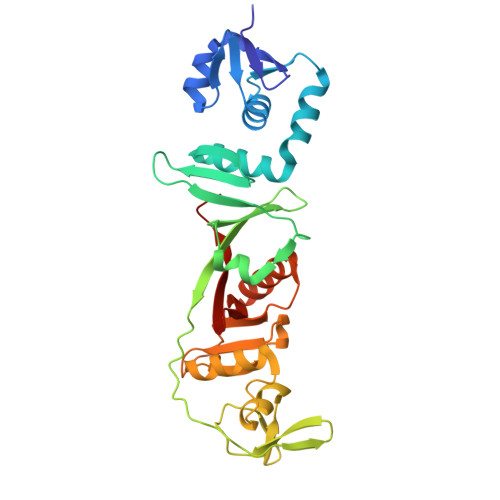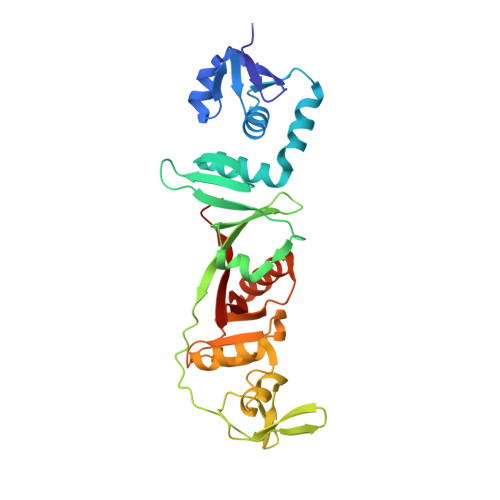Structural and Mutational Analysis of tRNA Intron-Splicing Endonuclease from Thermoplasma acidophilum DSM 1728: Catalytic Mechanism of tRNA Intron-Splicing Endonucleases
Kim, Y.K., Mizutani, K., Rhee, K.H., Nam, K.H., Lee, W.H., Lee, E.H., Kim, E.E., Park, S.Y., Hwang, K.Y.(2007) J Bacteriol 189: 8339-8346
- PubMed: 17827289
- DOI: https://doi.org/10.1128/JB.00713-07
- Primary Citation of Related Structures:
2OHC, 2OHE - PubMed Abstract:
In archaea, RNA endonucleases that act specifically on RNA with bulge-helix-bulge motifs play the main role in the recognition and excision of introns, while the eukaryal enzymes use a measuring mechanism to determine the positions of the universally positioned splice sites relative to the conserved domain of pre-tRNA. Two crystallographic structures of tRNA intron-splicing endonuclease from Thermoplasma acidophilum DSM 1728 (EndA(Ta)) have been solved to 2.5-A and 2.7-A resolution by molecular replacement, using the 2.7-A resolution data as the initial model and the single-wavelength anomalous-dispersion phasing method using selenomethionine as anomalous signals, respectively. The models show that EndA(Ta) is a homodimer and that it has overall folding similar to that of other archaeal tRNA endonucleases. From structural and mutational analyses of H236A, Y229F, and K265I in vitro, we have demonstrated that they play critical roles in recognizing the splice site and in cleaving the pre-tRNA substrate.
Organizational Affiliation:
Division of Biotechnology, College of Life Sciences and Biotechnology, Korea University, Seoul 136-701, South Korea.



















